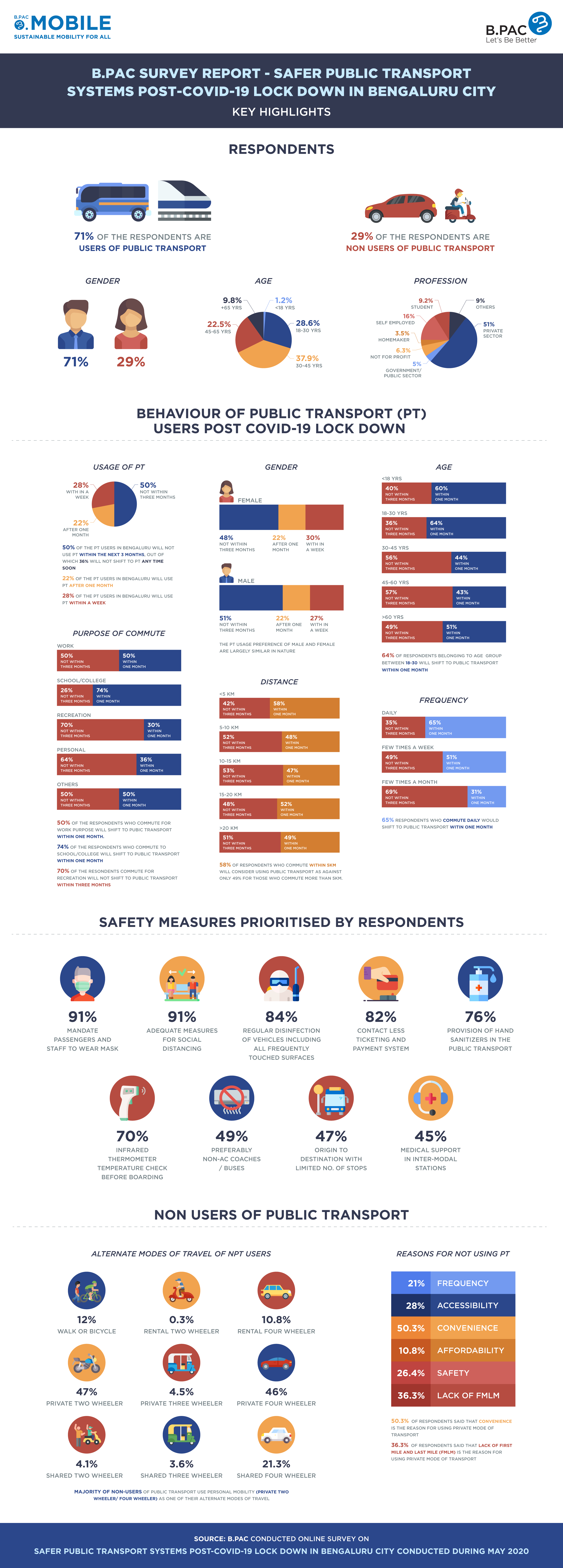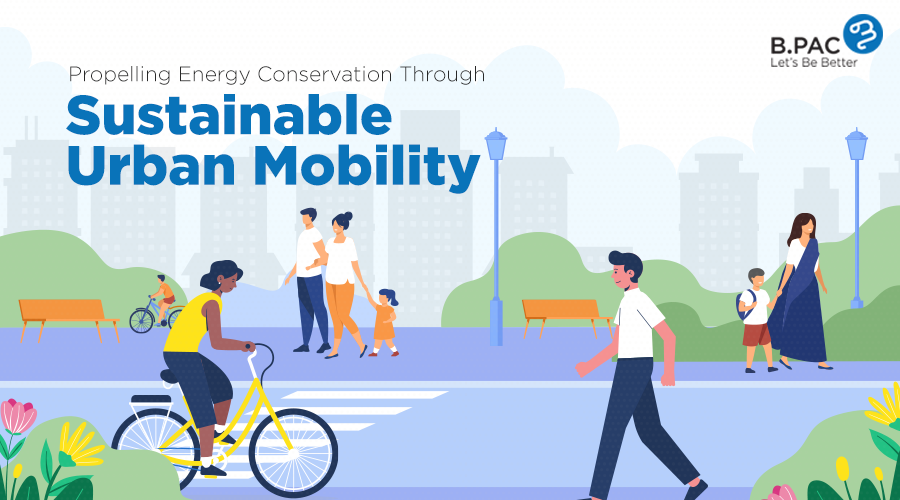Safer public Transport systems Post-COVID-19 lock down in Bengaluru city
Life in the post-COVID19 era is going to be vastly different from what we have known in very many ways. Mobility in public transport which was already a problem in many rapidly growing cities will be a big casualty in the near future. It is up to citizens and governments to work together to build back confidence in the safety of public mobility systems.
Even as the lockdown is gradually lifted, the provision of safe public mobility services and sustained messaging to build back much-eroded trust in the safety of our systems will be crucial in this war of livelihoods and life. In a city like Bengaluru, many people stay far away from their workspaces and the choice is between walking /cycling shorter distances, using private transport for longer distances making mobility even more unsustainable than it already is, or take public transport and risk getting infected.
In recent years, the BMTC has lamented over declining ridership due to an increase in private/ shared transport. COVID 19 only exacerbates this crisis and public transit agencies need to put in place strict standard operating procedures for cleaning and sanitizing their fleet and providing commuters with an overall positive experience at much lower price points.
To understand the commuter behavior and precautionary measures to be undertaken by public transport operators (BMTC/BMRCL/KSRTC/SWR) to make citizens of Bengaluru consider public transport as a safe mobility option, Bangalore Political Action Committee conducted an online survey of 1072 respondents. The survey was conducted from 5th May to 14th May 2020.
The survey was divided into segments –
- The behavior of public transport users posts COVID19 lockdown and their priority COVID 19 preventive measures.
- Non-users of public transport and their priority COVID 19 preventive measures.
Below are key highlights from the survey:
- 71 % of the respondents were users of public transport and 29% of the respondents were non-public transport users
- 50% of the respondents who were using public transport prior to lockdown will not use public transport for at least three months once the lockdown is relaxed. Of this 36% are not planning to shift to public transport any time soon.
- The public transport usage preferences post lifting of lockdown for males and females were largely similar in nature.
- 71% of the PT respondents were above 30 years and 55% of those above 30 age would not consider using PT for the next 3 months. Further of this 40% would not consider using PT anytime soon.
- 29% of the PT respondents were of the age group between 18-30 and 64% of those between 18-30 age will shift to public transport during or at the end of one month.
- 5O% of the respondents who commute for work purposes said they will start using public transport during or at the end of one month as against 74% for those who use PT for school or college. 70% of the respondents commute for recreation and will not use public transport within the next three months.
- 58% of respondents who commute within 5km will consider using public transport as against only 49% for those who commute more than 5km.
- 41% of the PT respondents use PT daily to commute and 65% of these daily commuters said they would consider using public transport during or at the end of one month.
- The majority of the non-users of public transport use personal mobility – own bikes/cars as one of the alternate modes of travel.
- The top safety priorities for 1072 respondents were the compulsory wearing of a mask, adequate measures for social distancing, regular disinfection of vehicles, and contactless ticketing and payment system.
For more information, please contact: pooja@bpac.in




